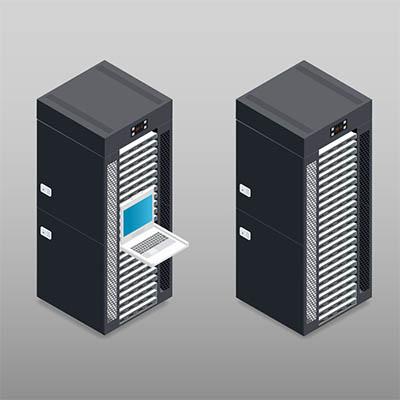Your Backup Needs to Meet Some Prerequisites

There is always the constant threat of data loss looming over your business. Even though the idea might be terrifying, you need to consider all of the many possible ways that crippling data loss can occur. To combat these issues head-on, you should implement a backup solution that adheres to industry best practices. We’ll help you determine what your business’ requirements are for a quality data backup solution.
Tip of the Week: Which Headphones are Right for Your Needs?

If your office is hectic, a pair of headphones is practically a necessity in order to get anything done. If they are wireless, all the better. When picking your own set of wireless headphones, you’ll want to keep a couple of factors in mind. Here are some of them for your consideration.
Tip of the Week: Which Headphones are Right for Your Needs?

If your office is hectic, a pair of headphones is practically a necessity in order to get anything done. If they are wireless, all the better. When picking your own set of wireless headphones, you’ll want to keep a couple of factors in mind. Here are some of them for your consideration.
Tip of the Week: Which Headphones are Right for Your Needs?

If your office is hectic, a pair of headphones is practically a necessity in order to get anything done. If they are wireless, all the better. When picking your own set of wireless headphones, you’ll want to keep a couple of factors in mind. Here are some of them for your consideration.
Specifications
First, you should ask if the headphones in question will be able to serve your express needs. You’ll have to do a little bit of research into the specifications of each of the potential models you plan on looking at, as well as reviews whenever possible to see what the masses think about them.
The first factor you want to look at is the sound quality. Will you be using this headset to talk on the phone? In this case, the quality of the microphone and sound quality is going to be particularly important. Bluetooth headphones are often limited in their sound quality, but they are still perfectly usable for talking on the phone. If you absolutely have to use one of these devices, you should make sure that it’s a headset designed specifically for this purpose. The headsets that are primarily used for listening to music tend to fall short of expectations when considering phone calls.
Next, think about how your headphones might restrict flexibility in the office. If you’re using a headset that has a dongle plugged into your workstation, you might be limited by the distance your headset can travel from the source of the call. Some headphones will also have battery life variables that will need to be considered, and you can’t have your headset powering down in the middle of an important call.
Lastly, you’ll need to determine just how comfortable each pair of headphones is. You don’t want to be uncomfortable while being productive, especially since this could put your productivity in jeopardy. In order to get the most out of your headphones, make sure that they don’t hurt your head.
Other Concerns
There are other questions that you’ll want to ask about your headphones, but they will be based on factors within your office. These include how the headphones are used and inter-office noise. If your office doesn’t have a lot of noise, you won’t need noise-cancelling headphones, but otherwise they might be a worthy investment. To this end, over-the-ear headphones will prove to be quite valuable, but it’s best to err on the side of comfort for the sake of your productivity.
Do you have any suggested headphones? Let us know in the comments and be sure to subscribe for more technology advice.
Tip of the Week: Your Desktop Needs Some TLC, Too

Does your business struggle with maintaining its Windows workstations? If you do, we fully understand any frustrations you might have. It can be challenging and time-consuming to keep your technology in proper working order, but it doesn’t have to be. With a couple of proactive tips to help you better manage your computers, you’ll be able to waste less time and stay productive during your workday.
Make Sure Your Devices Are Up-to-Date
Microsoft releases updates periodically to make sure that any issues with performance are addressed. You should implement these updates as they are released so that your devices are always working as intended by the developers. To check your device for possible updates that you may have missed, you can hit the Windows key and go to Settings > Update & Security > Windows Update > Check for Updates. If you are all up to date, the page will tell you so. If not, it will give you the option to install any updates that you may have missed. Once you’ve finished this, just restart your computer and complete the installation process. Hopefully, your device will be working a bit better.
Try Restarting Your Device
Even something as simple as restarting your computer can be a great way to improve its performance. The reason for this is quite simple; it shuts down any ongoing processes and allows it to recover. Think about it like trying to work for too long without taking a short break. If you work yourself into the ground, you won’t be good for much of anything, and you run the risk of experiencing difficulties during your ordinary work hours. The same can be said for your PC. Restart it once in a while to give it a breather. To restart your PC, just click on the Start menu or press the Windows key, then navigate to the Power selection and select Restart.
Disable Unnecessary Startup Apps
You might notice that some programs will start right up when you turn your computer on. You might see Spotify open up, or Microsoft Office 365 automatically log you in. Either way, if you find that your computer is taking a bit too long to start up, you can disable certain applications so that they don’t run on startup. First, you want to open your task manager by pressing Ctrl+Alt+Delete. In the More Details section, select Startup. You can then proceed to Disable programs that you don’t need to initiate on startup. Keep in mind that some of these are supposed to be turned on, though, so be sure to reach out to your trusted IT technicians with any help needed concerning startup applications.
By following these three tips, you’ll be sure to experience an improvement in the way your technology runs. If these didn’t help your computer’s situation, and you still need help, remember that you’re never alone. For more information about how to improve the performance of your business’s computers or workstations, reach out to us at (317) 705-0333.
Tip of the Week: Your Desktop Needs Some TLC, Too

Does your business struggle with maintaining its Windows workstations? If you do, we fully understand any frustrations you might have. It can be challenging and time-consuming to keep your technology in proper working order, but it doesn’t have to be. With a couple of proactive tips to help you better manage your computers, you’ll be able to waste less time and stay productive during your workday.
Network Security Needs To Be A Team Effort

Network security is more than just a conscientious attempt by your staff to protect your organization’s digital assets. It’s making sure that your employees know how to handle dangerous situations, implementing preventative IT measures to eliminate potential issues entirely, and having the right technology experts on-hand to handle tough problems that can’t be solved by a few pieces of technology.
To begin, let’s take a look at what role your organization’s IT department plays in the overall security of your business’ infrastructure. We’ll then move on to how the average employee can reinforce network security, and how outsourced help can be beneficial.
Your Internal IT (If Any)
First, the responsibilities of your IT department must be considered. Ordinarily, your IT department would be responsible for tasks such as monitoring your network, installing patches and security updates, and general upkeep of your technology systems. Of course, that assumes that you even have an IT department in the first place, which not a lot of small businesses have. The expense of hiring in-house technicians can add quite a bit of strain to your budget that you may not be able to afford. Or, worse yet, you leave all of the technology-related maintenance to your ordinary employees who have other jobs and responsibilities. This not only takes time away from your business’ busy employees, but also compromises security, as tasks may be rushed or performed wrong entirely.
What Your Employees Can Do
Even if you do have an internal IT department, your employees can practice certain security practices to ensure that they don’t contribute to your business’ troubles. Many issues concerning network security are caused by user error, such as clicking on the wrong link or downloading the wrong attachment. Furthermore, passwords–one of the most critical parts of any security protocol–are often created in such a way that they aren’t secure enough. Passwords should be long and complex, utilizing combinations of both upper and lower-case letters, along with numbers and symbols. They also shouldn’t be the same across the organization, or shared with others. Reinforce that your employees also be wary of any suspicious messages in their inboxes, and advise them to report anything strange or out of place to your IT department.
What You Can Do
Even if you do have an internal IT department, they might be so swamped with work that they don’t have the time to reinforce your network security. On the other hand, if they are dedicated to ensuring the security of your network, they may not have time to deal with the more routine tasks, like assisting with technology troubles or help desk support. Outsourcing your security, as well as general maintenance for your infrastructure, is a great way to assist your internal team with day-to-day responsibilities. Think of it as a way to resolve any bottlenecks that they may be running into, be it a lack of time to properly monitor your network security, or a lack of availability to resolve in-house employee technical difficulties. It’s just one way that outsourced IT solutions can help your business protect itself in the long run.
Does your organization need assistance with IT security? Catalyst Technology Group can help you augment your security capabilities through the use of managed IT services. To learn more about how we can keep your organization secure, reach out to us at (317) 705-0333.
4 Ways a Unified Threat Management Solution Covers Your Company’s Security Needs

Your company’s network contains a gold mine of sensitive information that you need to protect at all costs. While it’s absolutely the case that you need to make network security a top priority for your business, thankfully, multiple aspects of your security can be covered easily enough by implementing a single, enterprise-level security solution.
The solution we’re referring to is a Unified Threat Management (UTM) tool. It’s a powerful tool that combines the fundamental security features that every business needs, into one easy-to-manage package. If you’re looking to get a handle on your company’s network security, then consider these four ways that a UTM provides comprehensive protection.
Firewalls
A firewall is the first line of defense for your company’s network, protecting your business from the onslaught of online threats trying to sneak their way in. One can go so far as to compare a UTM firewall to a sort of virtual bouncer for your network that; assesses the threat level of your network’s traffic, garners if it’s a security risk, and then clears for passage only what’s deemed to be safe.
Antivirus
Every good firewall needs an antivirus solution to compliment it. After all, some forms of malware are sneakily engineered to play on a user’s ignorance so as to bypass the firewall. In such a scenario, antivirus software is there to quickly catch and eliminate threats such as viruses, trojans, spyware, ransomware, and more. Given the destructive nature of many of these threats, you’re going to want a powerful antivirus solution in place that prevents such viruses from spreading across your network and wreaking havoc on your systems. Additionally, while there are many kinds of antivirus solutions on the market, businesses will want to take advantage of a centrally located antivirus solution like what comes with a UTM. This way, updates and scans can be done automatically and in one fell swoop, instead of being left up to each individual user.
Spam Blocker
Having spam in your inbox is totally annoying, and it can also be dangerous. One common way for hackers to spread malware is by attachments found in spam messages. Plus, savvy hackers will employ spam as a phishing tactic to trick users into opening the message and following its instructions which appeal to emotions. Examples include a fake summons to jury duty, a fake package that couldn’t be delivered, a fake resume for a job opening, etc. A quality spam blocker will prevent these messages from hitting employee inboxes in the first place, which greatly reduces the risk of a user being tricked by spam.
Content Filter
Businesses also need a way to protect their networks from the vast amount of online threats that come from visiting dangerous websites. Unfortunately, it’s all too easy for an employee to stumble upon a website that’s designed to harvest credentials or download an attachment designed to infect your network with a virus or even ransomware. With a content filter protecting your network, you’ll be able to block users from accessing suspicious websites in the first place. Additionally, a UTM content filter allows you to block time-wasting websites like social media, YouTube, Netflix, etc., making it a valuable tool that both protects your network and enhances productivity.
In order to be adequately protected, your business needs all four of these security features. A UTM from Catalyst Technology Group conveniently offers your network protection in all of these ways, and more. To equip your network with a UTM security solution that’s customized to fit the needs of your business, call us today at (317) 705-0333.

